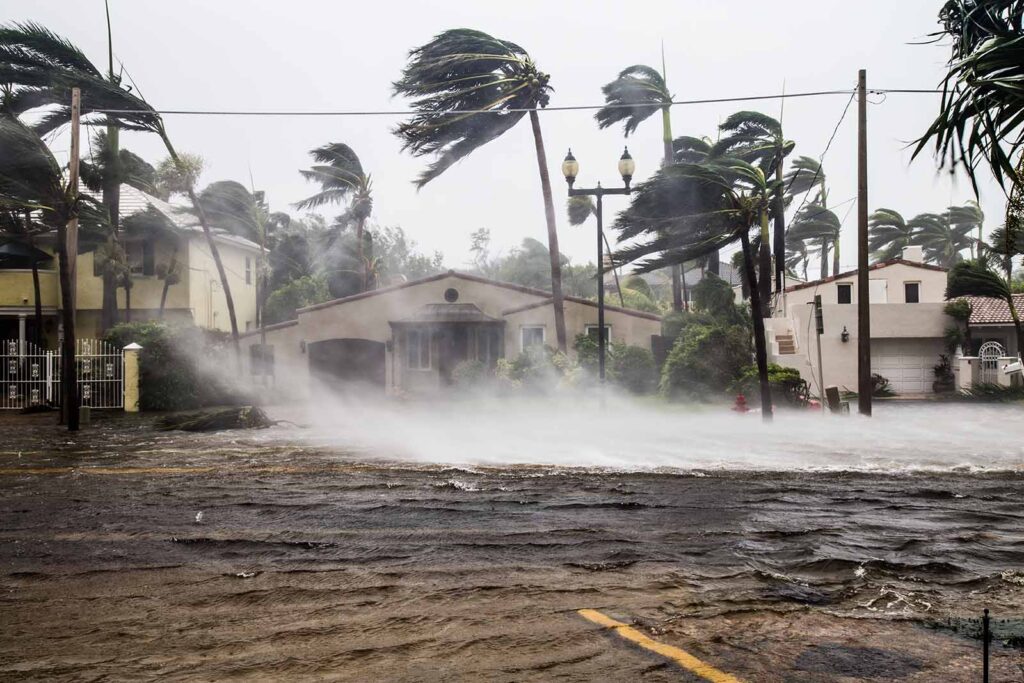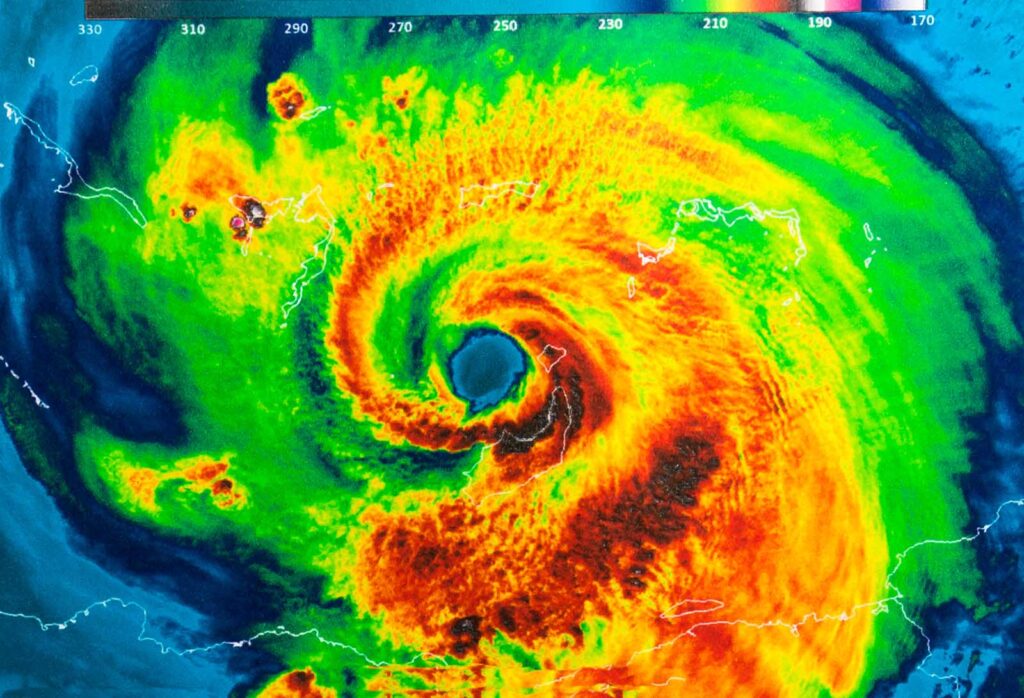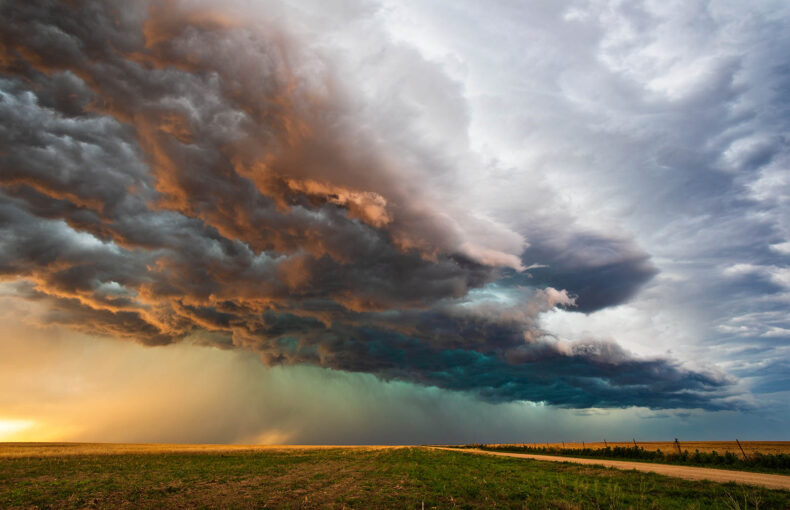Top 3 insights to help businesses stay ahead of a hyperactive hurricane season
The 2024 Atlantic hurricane season is less than two months away, and Spire Global weather risk communicators say now is the time for businesses in hurricane-prone regions of the United States to prepare, especially as a hyperactive season seems increasingly likely.
Several factors could lead to an increased volume of storms and intensity of hurricanes, Spire Weather & Climate meteorologists warn. There is even the potential for storm development ahead of the official start of the season.
Understand your risks
Atlantic waters are unusually warm, with sea-surface temperatures rising above the historical average. Ocean temperatures observed in late March were more on par with levels typically reached in late April or early May, according to Spire Weather Risk Communicator Tyler Sherrod.
That is raising red flags among meteorologists since warm ocean waters act as fuel for budding and strengthening tropical cyclones and could signify the potential for tropical development ahead of the official start of the season. However, tropical storms and hurricanes outside of the hurricane season; which runs from June 1 to November 30; are “uncommon” due to disruptive winds driven by the subtropical jet stream that often inhibit early-season systems from forming.
Meanwhile, other signs also point toward a busy tropical season, including the potential for La Niña to return by summer. La Niña, the cooler counterpart to El Niño and marked by below-average water temperatures around the equator in the central and eastern Pacific Ocean, has implications on weather patterns worldwide.
“The probability of a very active Atlantic tropical cyclone season for 2024 is likely to be quite high, both in volume of storms and in hurricane strength,” Levi Blanchette, Spire Weather Risk Team Lead, said. Not only will storms be fueled by above-average water temperatures but La Niña also tends to lessen disruptive winds and stability, two variables that hinder tropical development across the Atlantic Ocean.
An average Atlantic hurricane season produces 14 named tropical storms and seven hurricanes, including three that strengthen into major hurricanes – Category 3 storms with maximum sustained winds of 111 mph or greater.

Develop and implement an emergency action plan
“Ultimately, whether a hurricane season is expected to be below or above average, businesses and residents of regions that are the most susceptible to tropical impacts should be prepared for hurricanes or tropical storms every year,” Spire Weather Risk Communicator Rhiannon McDermid said, underscoring the importance for preparation in mitigating risks ahead of each hurricane season.
“An overactive hurricane season will increase the risk of any one area seeing impacts, but ultimately it can take just one storm to bring significant impacts,” she added.
Hurricanes can unleash flooding rain, destructive winds, tornadoes, and storm surge. The National Hurricane Center (NHC) identifies storm surge as the greatest threat to life and property along coasts. Heavy rainfall can also lead to extensive flooding, responsible for more than 50% of hurricane-related deaths each year. Additionally, hurricane-force winds and windblown debris pose significant risks to buildings and people.
“Businesses can prepare in advance by making sure they have the tools they need to prepare for a storm situation quickly to not only reduce the risk of their operations and assets taking hits, but also so employees have enough time to prepare their own homes and families for the storm or evacuate if the situation calls for it,” McDermid explained.
Proactive measures, such as securing important documents, maintaining generators, and developing evacuation and redundancy plans are critical steps in ensuring business resilience in the face of disasters like hurricanes.
“Businesses can be proactive in risk mitigation by being aware of what the biggest risks to them would be. If storm surge is a concern, then proactively keeping important documents or equipment (that cannot be removed from the premises entirely) on a higher story or in an attic could help reduce the potential for water damage,” McDermid advised. “If electricity is imperative to operations, whether to keep servers running, or if goods need to remain refrigerated, then make sure any generators are in good working condition before hurricane season, so there is time to make repairs or replacements before they’re needed.”
Other factors to consider in business preparation are the cost and availability of supplies ahead of a season versus during the season when storms are developing and approaching. The cost of lumber to board up and repair businesses, for instance, skyrocketed during the COVID-19 pandemic, and that complicated business resilience during hurricane seasons that significantly impacted the US, particularly the Gulf Coast.
“Hurricanes cannot be stopped in their tracks, but knowing what the highest risks to your business would be, and already having a plan in place, and making sure the tools you need to quickly and efficiently prepare for those risks are already available and in good working condition, can help you quickly and efficiently prepare for an approaching storm,” McDermid said.
While businesses in coastal areas along the US East Coast and Gulf Coast stand the greatest chance of tropical impacts in any given season, inland businesses are also urged to remain vigilant due to the risk of inland flooding that hurricanes can trigger.

Know what’s coming
Research has shown that hurricane intensity is increasing due to climate change. Not only are hurricanes growing stronger, but they are also producing heavier rainfall, which enhances the risk of major flooding.
Rising sea levels due to a warming planet and sea ice melt contribute further to storm surge, the deadliest danger from hurricanes along US coastlines, making awareness, preparedness, and risk mitigation even more critical.
Businesses can tap into Spire’s accurate forecasts, with the advantage of space-based data from Spire’s constellation of more than 100 satellites in orbit, track weather concerning their assets for precise and timely warnings, and gain access to expert meteorologists for 24/7/365 support.
“Emerging technologies and methodologies in hurricane forecasting offer promising avenues for providing more precise and timely warnings to businesses, enabling them to better manage risks associated with these natural disasters,” Spire Weather Risk Communicator Nicole LoBiondo explained, adding, “These advancements include remote sensing and satellite technology, numerical weather prediction models, artificial intelligence, machine learning, and high-resolution weather forecasting techniques.”
DeepVision™ by Spire offers unparalleled weather risk management, empowering businesses with weather insights they can act upon, precision monitoring, and live 24/7 weather guidance from expert meteorologists, helping to enable proactive decision-making to optimize operations and prioritize safety.
“By integrating these technologies into their risk management strategies, businesses can enhance their preparedness and resilience in the face of hurricanes,” LoBiondo added. “Leveraging these tools and services, businesses can monitor and track hurricanes in real time, access accurate forecasts, and assess the potential impacts on operations, minimizing the impact on business continuity before, during, and after impactful events.”
Key business takeaways
Understanding hurricane risks is crucial for organizations, especially those in vulnerable areas. Developing a preparedness and mitigation plan is essential for protecting employees, customers, and assets, and ensuring business continuity in the aftermath of disasters.
By implementing preparedness and mitigation strategies, businesses not only enhance their own resilience but also contribute to their community’s ability to recover from disasters. Ensuring business continuity is paramount, as it allows operations to continue after a disaster, ultimately strengthening the overall recovery efforts and minimizing disruptions to the economy and society.
Explore weather risk management with DeepVision™
Unlock superior weather intelligence, minimize disruptions, and streamline your operations with access to our 24/7 weather risk communication team.
 Written by
Written by


